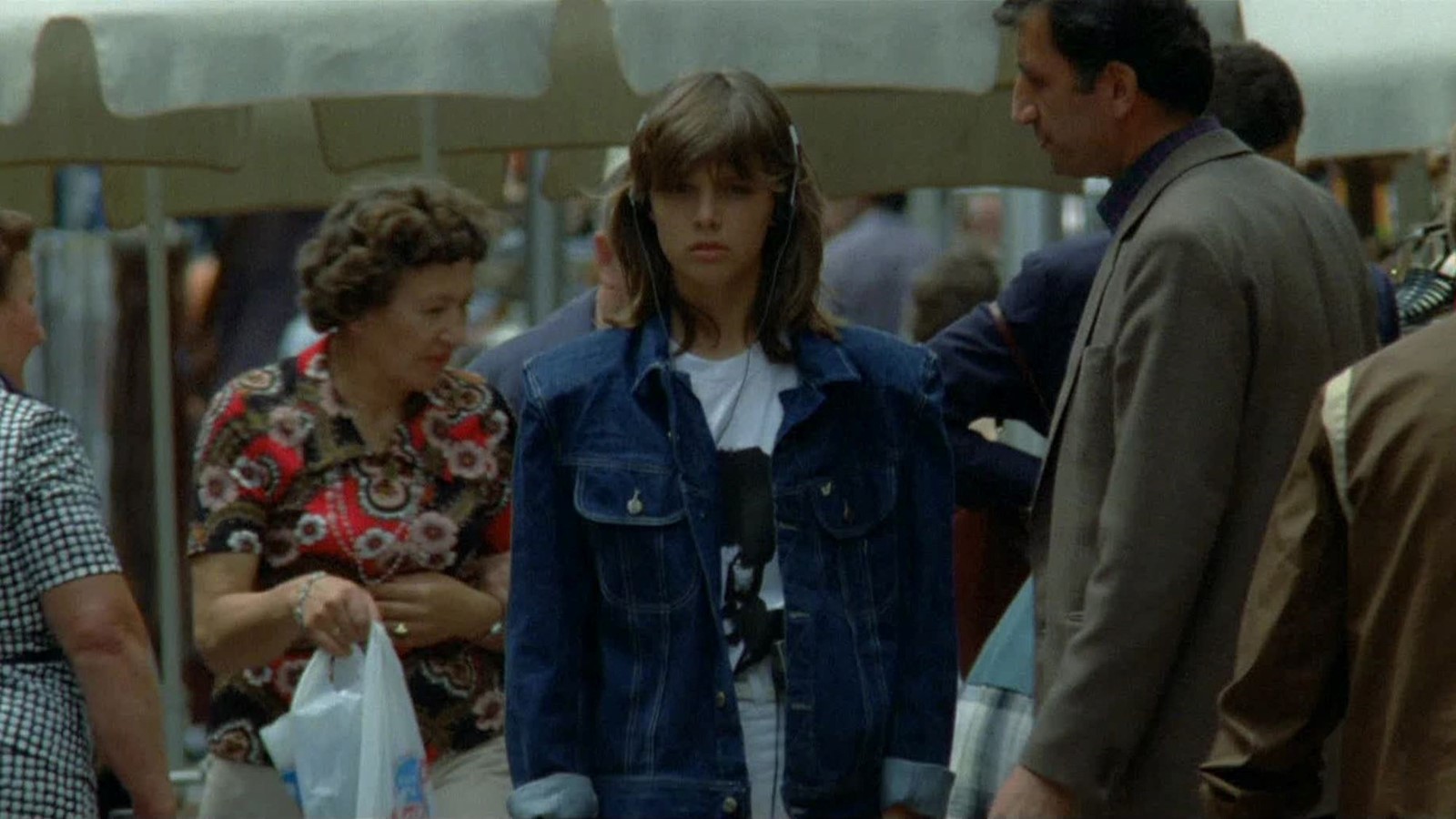Girlhood Studies: How has visual culture shaped ideas of girlhood? In the second season of her AnOthermag.com column, Claire Marie Healy continues to investigate the on-screen girlhoods we may have overlooked.
By way of research for this column, I decided to revisit the time and place of my purest, most spiritual experience of personal fandom: the portal to this time and place being to listen to Bloc Party’s Silent Alarm album in full. I had a great crush, at the time of its release, on this band and what they – Kele, Russell, Gordon and Matt – seemed to represent. They were my Beatles, or Stones; or Billie, or Haim, for those reading this in 2022. But though I performed a kind of conversion ritual on my group of friends in order to have people to go to the shows with who weren’t my dad (I was only 13 going on 14, after all), what strikes me now is the solitary nature of my memories. Listening to the record now doesn’t transport me to a feeling of community, or of being in a crowd. Nor are my memories anything to do with a particular aesthetic, like that recently spirited up by ‘indie sleaze’ – I was too young, after all, for the sexual charge that moniker would come to represent. There are other object associations: weirdly, the band led me to buy my first issue of Dazed & Confused, the magazine I would later edit. But mainly, I am brought back to a feeling of, not loneliness exactly, but aloneness: listening in my bedroom, or from an iPod on the long school bus journey. Aloneness, because it’s a time before you’ve ever been in the world and seen what’s out there, in order to feel what it really is to miss out on that.
It hurts my heart a little listening to, say, This Modern Love and to feel that feeling again. The word that comes to mind when I think of the feeling of being a fangirl is something like solicitude, which seems strange: but also, in that word’s definition which mixes feelings of both anxiety and care, somewhat apt. A kind of quiet worship, full of tension, between yourself and the (idea of the) musician, feels closer to my own experience than the image of the crazed teenage fangirl, who, if her depictions in cinema are to be believed, is out for blood.
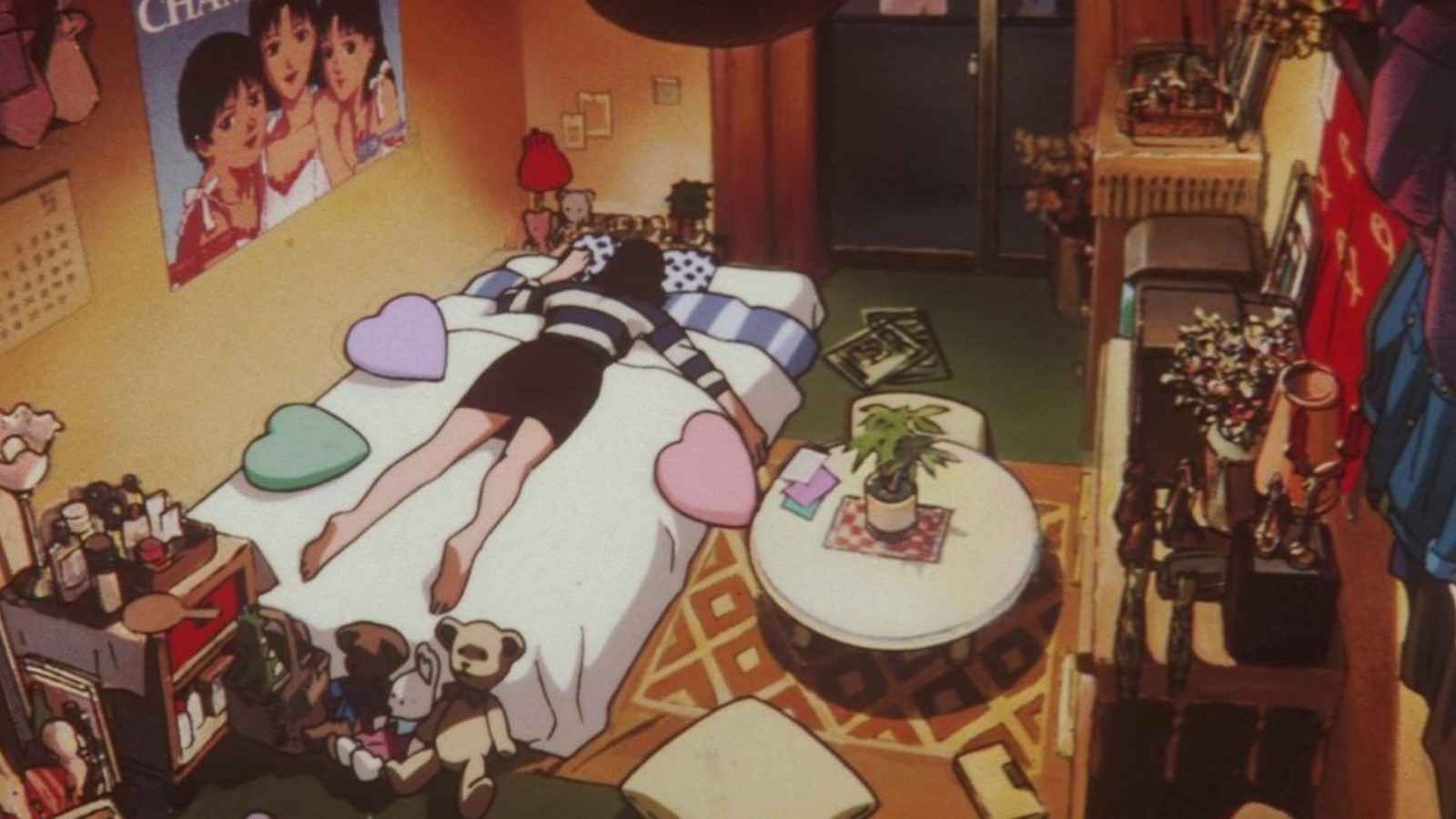
The trope of the fangirl has been explored in cinema pretty much in tandem with the depiction of teenage girls in the first place. The rise of the concept of a youth consumer culture in the middle of the century is inextricable from the phenomenon of the rise of Elvis Presley in the 1950s, or a decade later, The Beatles. The idea of marketing to this new market of young female fans – and their pocket money – was one quickly taken up by Hollywood in these decades. The 1963 musical Bye Bye Birdie was even directly inspired by the devastation of teenage girls when Elvis Presley was drafted into the US Army in 1957 (one for the Mad Men fans, maybe). But as the last half of the 20th century turns darker, so too do depictions of the fangirl. Even the word itself comes into use only with a shade of negative connotation: according to the Oxford English Dictionary, she is not only “a female fan chiefly of comics, film, music, or science fiction”, but especially, “an obsessive one.” Created in parallel to the media attention on fangirls that has existed from Beatlemania right through to the Beliebers, Beyhive and Swifties of today, films featuring fangirls have always said a lot about the particular anxieties that collect around teenage girls who articulate their desires.
In West Germany in the early 80s, two films released within a year of each other examine a young, female music fan at their centre. In both, obsession is the driving force for the girls’ journeys, but the results are very different. The first, Uli Edel’s Christiane F (1981) is based on the 1978 book Wir Kinder vom Bahnhof Zoo (We Children from Zoo Station) by journalists Kai Hermann and Horst Rieck, which is itself adapted from a series of interviews with a real 16-year-old, Christiane Vera Felscherinow, about her life to date as a heroin addict and sex worker. Her story, told to the journalists over several months, spans the ages of 12 to 15. The book achieved instant notoriety, spotlighting the truth of Berlin’s severe drug problem among teenagers at that time. (It also, inevitably, made something of a cult star of the girl whose life it was based on). On-screen, Christiane’s world is brought to life in grittily realistic fashion by Edel, being shot around the actual surroundings of Gropiusstadt and Bahnhof Zoo – and the age-appropriate casting, centred by an luminous performance by Natja Brunckhorst, forces the viewer to see the increasingly desperate situation for what it is (and these kids, as the children they really are). Even the inclusion of a David Bowie concert in the film’s central sequence (he also soundtracks the film) isn’t, surprisingly, a mere marketing angle, but instead a reference to the real concert where Christiane first took the drug.
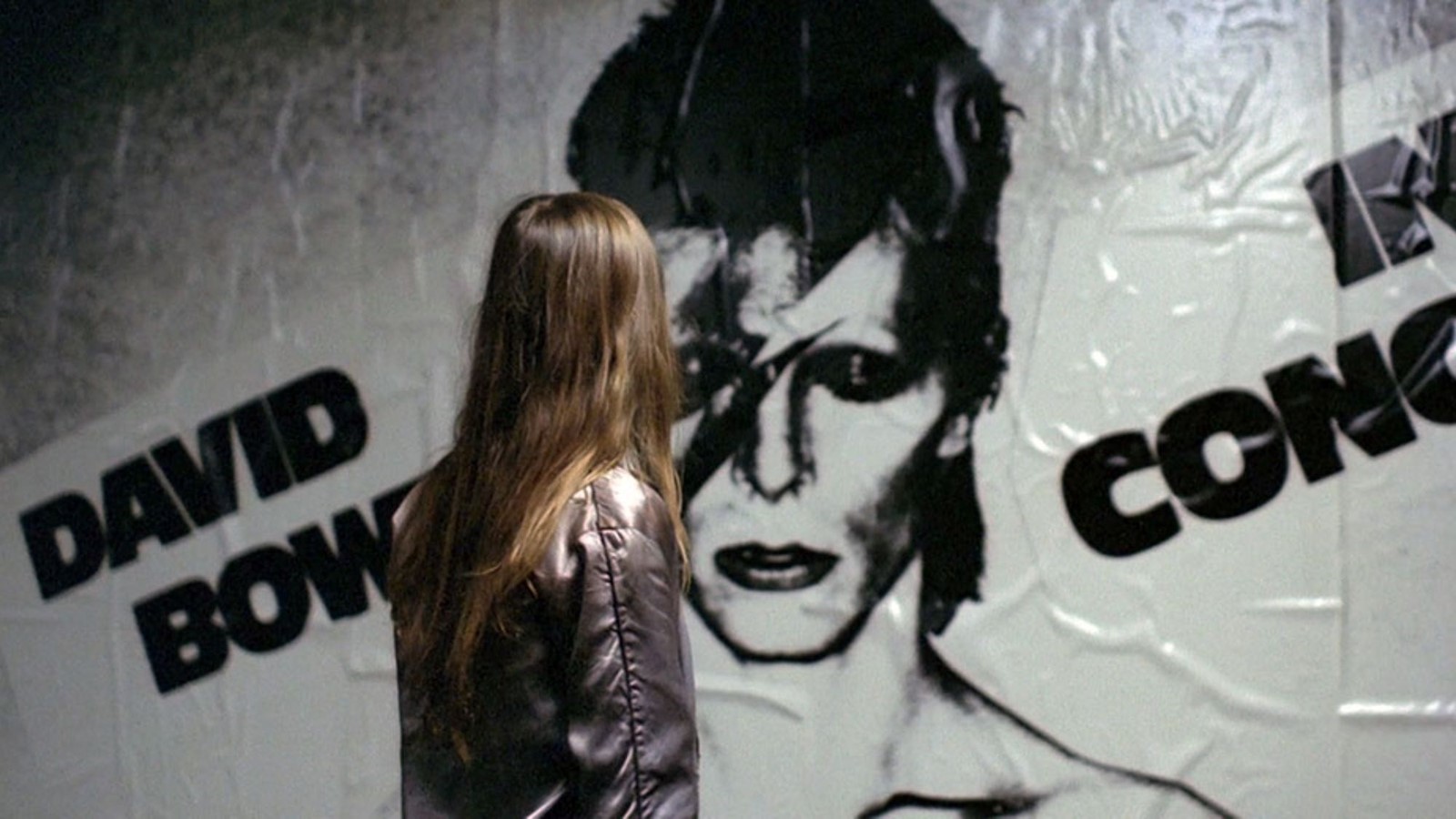
Given reports of David Bowie’s own encounters with underage groupies, I was slightly concerned on first viewing that this film I was enjoying – for its colourfully dirty vibe, but also the respect it shows for its young female lead – would include some kind of problematic encounter between the star, and the girl. But no: Bowie and Brunckhorst just appear in the promotional stills together. Instead, in the world of the film, there’s a wonderful moment between Christiane and her idol, experienced as any fangirl might normally experience it. Early in the morning, Christiane waits for her train home after staying out all night (“Sound” she muses at the film’s opening, “Europe's most modern discotheque … I want to go there”). In that subway station, before she has ever tried heroin, she is just a girl who has stayed up all night at a club for the first time, gazing at a poster being pasted by workers onto the wall: DAVID BOWIE – IN CONCERT. The moment is a capsule: it exists in the space in-between Christiane and her idol, in full Aladdin Sane regalia. As we’ll later see, to step into that space any further is to cross a precipice: not in actuality getting closer to these rock gods, but only to the drugs that are their inevitable side product.
In fact, there’s an innocence to Christiane F which feels truthful to many girlhoods, even those without the destructive forces of addiction. Accusations of the film’s stylishness outweighing its substance feel moot, to me – anyone who has seen the contemporary documentary work of Mary Ellen Mark, such as in her collaborative film Streetwise, can see the grubby stylishness of girls similarly at the margins in this decade. Even later in the film, as depressingly bleak as the events which come to pass are, you feel the facts of the characters’ youth and their experience, without the camera working to exploit that, as it so often does with very young actresses. And I challenge anyone to watch this clip, in which Christiane and her new friends run through a shopping centre after-dark to the strain of Heroes, without experiencing a Bowie-shaped lightning bolt to the heart.
“We’re the ones who, watching these films, are taken back to one of the most potent aspects of girlhood: the experience of existing inside yearning itself”
The other German film about a fangirl to emerge at this time shows addiction to the musician, not to drugs, as the more dangerous force in a young girls’ life – a study in extremes, rather than realism, that is firmly placed in the psychological horror realm. In Der Fan (1982), directed by Eckhart Schmidt, we watch as Simone (Désirée Nosbusch, who would go on to become a successful television star) dedicates her life to being a fangirl of R, a new-wave singer played by real electropop artist Bodo Staiger. (Imagine a girl shouting “R” at the highest pitch of her voice; even the name begins to sound like a fangirl’s scream). In the first part of the film, Simone’s dedication to R necessitates skipping school to wander her suburban town with his music in her earphones, writing fan letters in her bedroom/shrine, and going back and forth to the post office to await the response she firmly believes is coming. She dresses androgynously, wearing white shirts, brown leather pants, and no make-up. Her hair is undyed, worn in a shaggy bob; a synth soundtrack warns us that, eventually, her obsession will take a darker turn.
The unanswered letters to R provide the narrative thrust, as each day she doesn’t receive a letter back enacts a countdown, splashed on screen: she has promised to herself that if she hasn’t heard from him soon, she will travel to the city to find him in person (we hear everything in voiceover, from Simone’s perspective). Eventually, she hitchhikes all the way to Munich, sleeping rough and planning how she will meet R (in both her angst and her personal hygiene, Simone feels like a kindred spirit to the 90s “Dirty Girls”.) Incredibly, she does meet him – outside a television studio – and is taken into his circle. What happens next is, in terms of plot, an indictment of rock and roll’s history of statutory rape culture, but also a trick peformed on the expectations of the viewer. The fangirl, by her very nature, isn’t meant to get this close to the rock star, because then she would no longer be a fan: she would be a groupie. It’s the way that the dreams of Simone come unstuck and distort, when she actually encounters R, that leaves an impression. Simone cannot assimilate her girlish dreams – which only ever involved visions of kissing, of talking – with the reality of men’s exploitation of girlhood: the result rips through her sense of reality, resulting in the film’s grisly end.
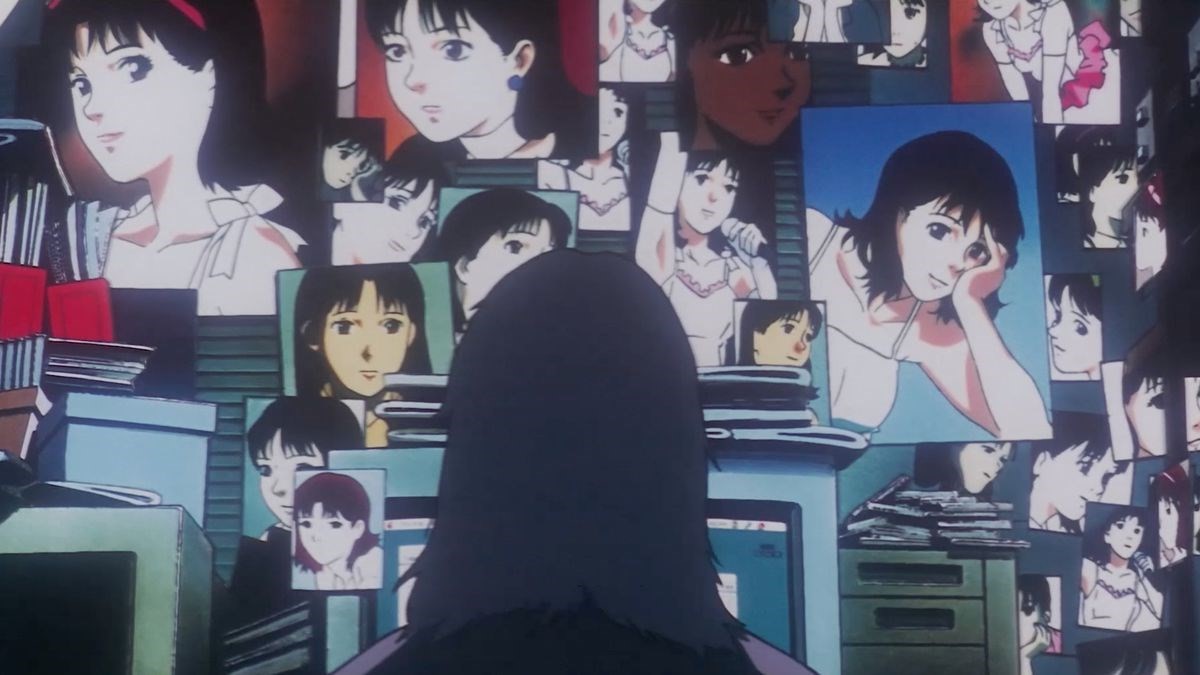
Der Fan is powerful, though in the end it makes for uncomfortable viewing: not for the fact of its brutal conclusion – it is a horror movie, after all – but for the way Schmidt films his underage actress in the final scenes. (That the actress unsuccessfully sued to have some of these nude scenes removed for the final cut is important context). If only more ethical decisions had been made in the film’s making and later, its marketing, it might not be so obscure today. But before the film takes that turn, we spend time with a pure fangirl, who projects her dreams of a different life onto a popstar so generic that even his name is just pure, open-ended sound. In my favourite scene, Simone recounts her latest letter to R in voiceover as she wanders off a bus and to the post office, oblivious to the advances of an actual teenage boy: ‘If you did get my last letter, then you can skip to page two, where I put the big heart on the page,’ she writes, ‘You don’t know me, but I’ve known you now for two years, and I know I can put meaning into your life.’
In Japan, there’s a word for fans with obsessive interests, including pop music but mainly anime or manga; unlike fangirls, the “otaku” often skews male in popular culture. With anxieties around otaku culture pervading Japanese society since the 80s, anime filmmakers have often metatheatrically woven ideas of fandom into their productions. The most recent to turn the trope on its head is Belle (2021), a film in which the teen-girl protagonist projects so hard into the metaverse that she actually becomes famous herself. Mamoru Hosoda’s anime, a loose adaptation of the Beauty and the Beast fairytale, tells the story of a shy teenage girl who combats her loneliness through becoming a famous singer, called Belle, in a popular virtual world. The film, in its affirmation of the desire of its young female protagonist, feels like a kind of reversal of a previous anime on the triangulation of fame, the internet and young womanhood in modern times: the late Satoshi Kon’s Perfect Blue, which premiered in 1997. Both films, exploring as they do the blurring of fantasy and reality that a total media culture fosters, feature the kinds of fan culture appropriate to their respective eras: in Perfect Blue, Mima navigates magazines, television and the early days of the internet as an actress and pop star, and in Belle, Suzu traverses a virtual universe as her alter ego. But while for Kon, the internet affords a playground for obsessive, murderous fans to get eerily closer and closer to the lives of stars, in Belle, the internet is the teen-girl’s own playground: a landscape that, in offering a new space to be seen, ultimately allows Suzu to discover her real-world strengths.
“Fangirls personify one facet of girlhood that has always caused societal anxiety: a girl’s private desires, publicly expressed“
Perhaps, as in Belle, now that fangirls need not rely on the infrastructures of magazines and other media gatekeepers to be heard, stories of their communities are also due a shift in their depiction onscreen. After all, with communities forged on YouTube and TikTok, fangirls today are firmly telling – and filming – their own stories. (To hear directly from them, you probably can’t do better than journalist Hannah Ewens’ 2019 book Fangirls: Scenes From Modern Music Culture, which brings together interviews with various communities of fandom founded and led by teenage girls.)
That said, stories about fangirls will probably always hold some kind of fascination for makers of the visual culture we consume. This is because they personify one facet of girlhood that has always caused societal anxiety: a girls’ private desires, publicly expressed. To be a fangirl is to represent an acting-out of those desires – where films, often unrealistically and within the framework of certain genres, have taken that acting-out, is to turn it into an acting-on.
At times, Der Fan and Christiane F sometimes reminded me of the Linda Manz-starring Out of the Blue (1980), the Dennis Hopper film that was a previous subject of this column. Der Fan, for its similar depiction of a girl running away from home to get closer to the music that inspires her; Christiane F, for the resemblance of Christiane’s ‘Bowie’ silk bomber jacket to protagonist Cebe’s denim Elvis one (which now belongs to Chloë Sevigny, who was gifted it by Manz on the set of Gummo). All these films feature fangirls whose dreams for the future – however varied those dreams are – concentrate in the figure of the musicians they listen to, and before reaching their respectively explosive conclusions, they all spend a remarkable amount of time with their teenage protagonists: with the act of fangirling itself, which is the act of a girl dreaming. Even the real Christiane was surprised by the time the film spent with the events of her actual life, commenting in 2013, how she “thought David Bowie was going to be the star of my movie, but it was all about me.”
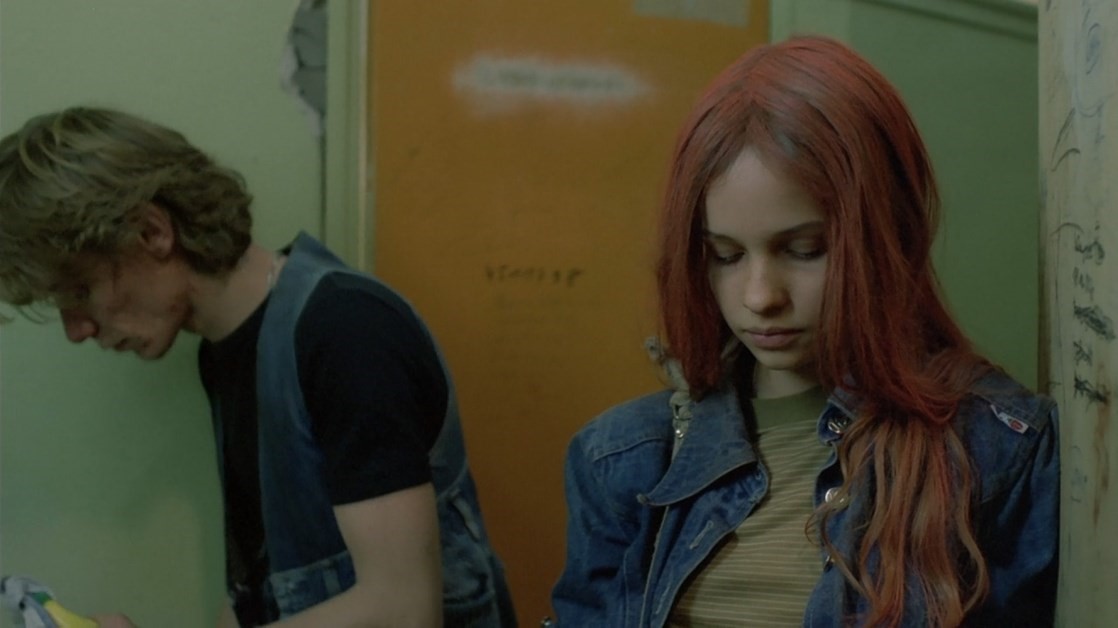
Not everybody appreciated that lens. Derek Malcolm, reviewing Christiane F in the Guardian in 1981, marvels at the film’s global success and asks three questions, each revealing a lot: ‘Was her home really so bad that all she could do was leave it? Was the boy really so caring that she would risk going to hell with him? And would a girl this pretty not have other, slightly less devastating alternatives?’ In other words, the critic states, this character is pretty, she’s a young girl, and she’s on my cinema screen – why has she not explained her motives to us? That is, why can’t I (a middle-aged man) readily read her codes?
Such a critic, demanding the teen girl protagonist explain herself much like a cross schoolteacher, seems to me to have missed the point; or, if not the point, then certainly the very thing that many women might find of value in the movie. It’s the former fangirls among us who relate to Christiane’s faint smile as she encounters the David Bowie poster; Cebe humming Heartbreak Hotel to herself along a desolate sidewalk; Simone watching R perform on television as if he is singing just to her, while her parents try to change the channel. We’re the ones who, watching these films, are taken back to one of the most potent aspects of girlhood: the experience of existing inside yearning itself. To do so is to move through a space where everything is potential, and stays that way.
